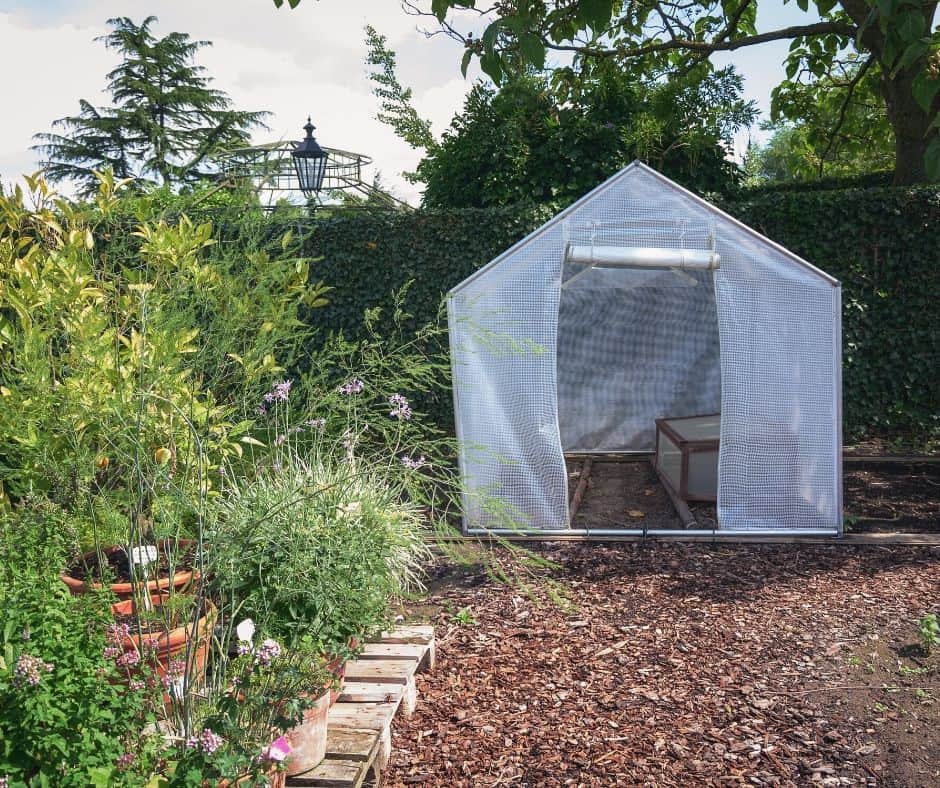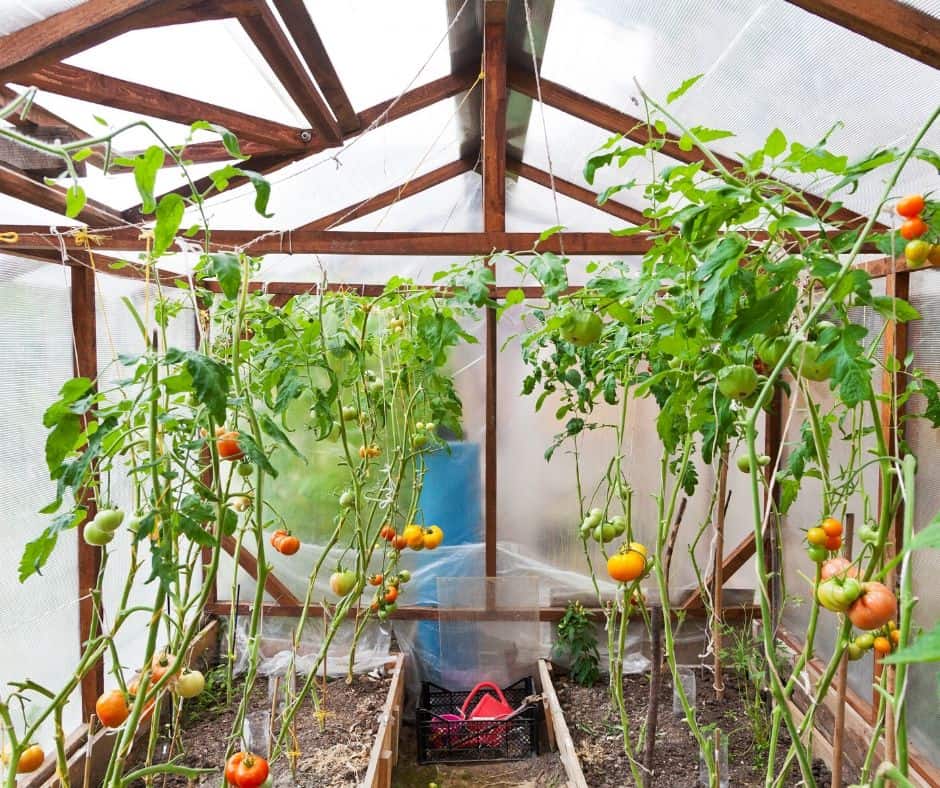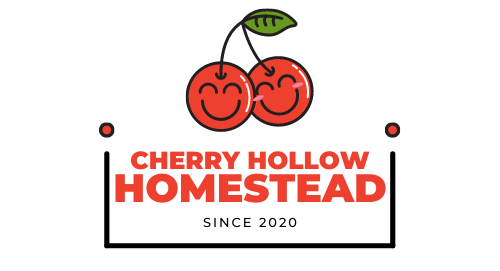If you’ve ever entertained the idea of a greenhouse in your backyard, then look no further! Learn how to start a greenhouse garden today!
While planting a garden in your backyard is a great way to enjoy fresh food in the summer and fall, there’s no reason the fun of gardening has to end after the first frost!
Greenhouse gardening is a great way to keep your garden going throughout the year. In addition to helping you plant crops when the ground is cold, having a greenhouse can also help you get a jump on your summer planting.
But greenhouse gardening can be a little intimidating if you don’t know where to start. Follow these five easy steps to start greenhouse gardening.

Consider Your Space
The first step to starting a greenhouse garden is to determine how much space you have available for your greenhouse. If you plan to build a permanent structure, it’s even more important to plan your space accordingly.
When thinking about how big your greenhouse will be, consider the available space in your yard and the number of plants you think you’ll grow inside. These considerations will help you decide how big your greenhouse should be.
Types of Greenhouses
There are a variety of greenhouse styles that fit different gardening needs:
- Freestanding greenhouses are stand-alone structures with translucent walls on all sides. Building a freestanding greenhouse on your property is a more expensive option, but it also comes with many advantages. Stand-alone greenhouses often offer more growing space than other types of greenhouses, which will allow you to extend your garden’s growing time considerably.
- Attached greenhouses are built attached to an existing structure, like your home or garage. When building this type of greenhouse, you won’t be required to build all four walls, which is a big advantage during the construction phase. This type of greenhouse is less expensive than a freestanding version. But the amount of sunlight is limited in this type of greenhouse since one wall of the structure will be blocked from the sun.
- Mini greenhouses are smaller structures that are often movable. Mini greenhouses can be made to fit over a small shelved planter or constructed similar to a small tent that holds several plants at once. This type of greenhouse is perfect for small spaces and can easily be moved from place to place.

Pick the Best Spot
Now that you know how big your greenhouse will be and what type of greenhouse you’ll use, it’s time to pick the perfect spot.
When thinking about where you’ll place your greenhouse, it’s important to consider:
- Proximity to the house
- Access to an outdoor water source
- Access to electricity
- Level ground
- Adequate drainage
- Maximum exposure to the sun (at least six hours of direct sunlight per day during the winter months)
Consider Additional Equipment
In addition to the structure itself, greenhouse gardening also requires different equipment to maximize the benefits. When planning your greenhouse, it’s also a good idea to consider other equipment you may need inside the greenhouse while gardening, like:
- Heating. If you plan on gardening during the winter, you’ll want to be comfortable inside your greenhouse as you work, especially during the night. It’s a good idea to insulate the greenhouse during the winter to help retain the warmth the sun provides into the cold of the night. You can also add radiant heat lamps or solar heaters to help warm the structure during the cold season.
- Ventilation. Regulating the temperature inside your greenhouse can often be difficult. A vent in the greenhouse is a simple way to help cool down the structure when it gets too hot. Adding a fan to the structure is another easy way to help keep air circulating throughout your greenhouse.
- Shade. During the warmer months, having shade inside your greenhouse is essential to keeping your plants from getting burned from direct sunlight. Shade cloth or pull-down screens are both great options for protecting the plants in your greenhouse.
- Additional light sources. Although sunlight is all you’ll need to grow plants during the spring and summer months, the shorter days of late fall and winter may require you to add additional lighting to your greenhouse. High output fluorescent lights or LED grow lights are both great options for helping plants grow in your greenhouse when the sun isn’t available.

Grow Your Plants
One of the biggest advantages of greenhouse gardening is the ability to extend your garden’s growing season by getting a head start on your spring and summer garden.
Using your greenhouse to start seeds is a big benefit of your new gardening structure! But before you start planting seeds in your greenhouse, you’ll need to make sure you have everything you’ll need on hand.
To get started on your greenhouse garden, make sure you have:
- Growing containers in various sizes
- Sterile soil
- Fertilizer
- Water
After collecting your materials, it’s time to get planting! Plant your seeds according to growing recommendations and watch them thrive in your new greenhouse garden.
Most of all – HAVE FUN AND EXPERIMENT!
